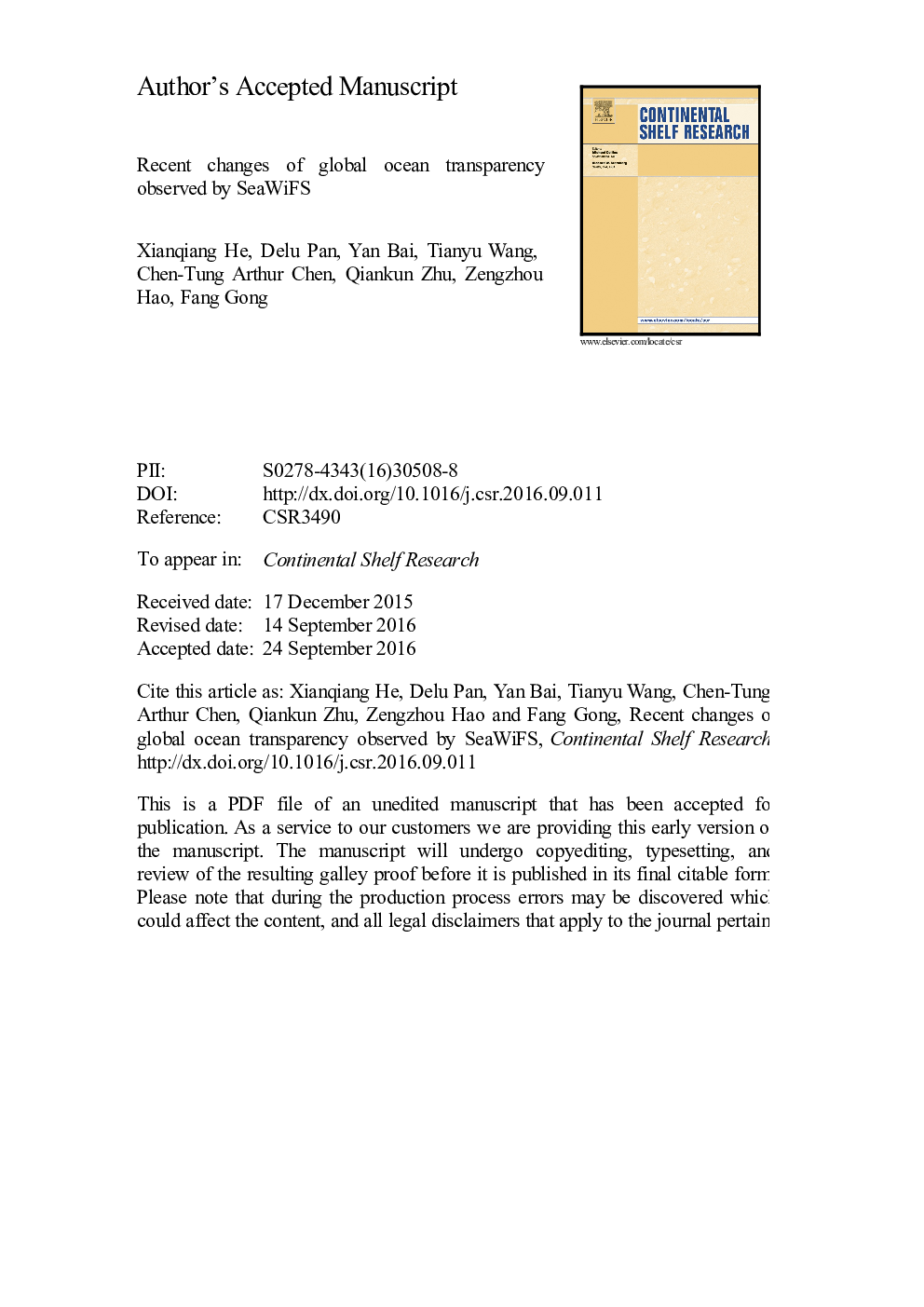| Article ID | Journal | Published Year | Pages | File Type |
|---|---|---|---|---|
| 5764396 | Continental Shelf Research | 2017 | 27 Pages |
Abstract
The water transparency usually quantized by the Secchi Disk depth, is a key index of water quality, and influences light penetration for phytoplankton photosynthesis. Although in situ measurements have provided century-long datasets in different regions, the seasonal and interannual variations as well as the long-term changes of ocean transparency at the global scale are still poorly understood. In the present study, based on the semi-analytic algorithm, the time series of the monthly global ocean transparency over Sept. 1997 to Nov. 2010 were retrieved from the satellite data observed by the Sea-Viewing Wide Field-of-View Sensor (SeaWiFS). The seasonal and interannual variations of global ocean transparency were identified from the SeaWiFS-derived water transparency. Large seasonal variation amplitude occurred at the front zones between subtropical gyres and high latitude oceans. Moreover, ocean transparency increased in the Northern Hemisphere, while it decreased in the Southern Hemisphere, especially in the Southern Ocean from Sept. 1997 to Nov. 2010. The global mean ocean transparency decreased rapidly with a rate of â0.85 m yrâ1 (p=0.001) between 1997 and 1999, followed by a small increase with a rate of 0.04 m yrâ1 (p=0.05) over 2000-2010, which might be linked to changes of sea surface temperature with rapid decrease over 1998-1999 and slight increase over 2000-2010. These changes of water transparency may alter the available light for phytoplankton photosynthesis, and influence the thermal evolution of the upper ocean.
Related Topics
Physical Sciences and Engineering
Earth and Planetary Sciences
Geology
Authors
Xianqiang He, Delu Pan, Yan Bai, Tianyu Wang, Chen-Tung Arthur Chen, Qiankun Zhu, Zengzhou Hao, Fang Gong,
